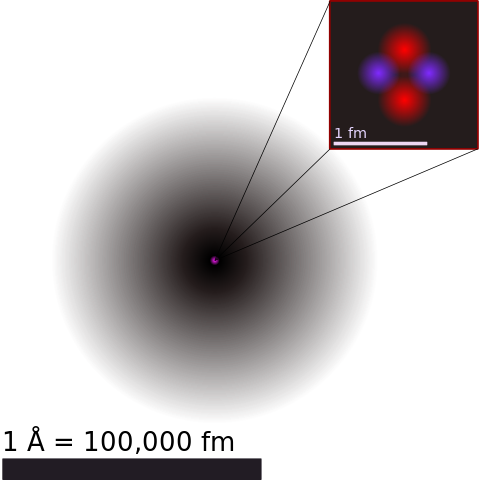The strong nuclear force (also called the strong interaction) is the force that holds ordinary matter together. It binds the quarks together that make up protons and neutrons. In this case it acts over the tiny range of about 0.8 femtometre.
It also binds protons and neutrons together creating atomic nuclei. This occurs in the range of between 1 femtometre to 3 femtometres. In this capacity it can be referred to as the nuclear force or the residual strong force—the strong force that remains from binding the quarks together.
The strong force accounts for 99% of the mass-energy of a common proton or neutron. Quarks make up the remaining 1% of their mass-energy. The binding energy that is partly released when a nucleus breaks up is related to the residual strong force. It is the fission energy in nuclear power.

Wikimedia commons | CC BY-SA 3.0